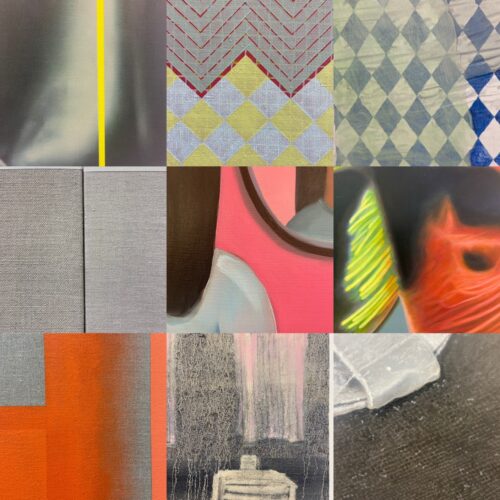
Study visit review: America After the Fall

As the big celebration of Abstract Expressionism at the Royal Academy closes another exhibition of American art opens and this time we are in ‘America after the Fall: Paintings of the 1930’.
For most of the students who signed on for the study day this was an opportunity to see paintings for the first time by artists working during the depression years of the 1930s.
Students of course recognise the work of Edward Hopper and many would have seen reproductions of the star of the show, the much parodied painting by Grant Wood called ‘American Gothic’. Enthusiasts for the period would revel in seeing such famous paintings as Charles Sheeler’s ‘River Rouge Plant’ and the early Stuart Davis ‘New York-Paris No3’, but for most this exhibition was a learning experience about the work of artists who are not represented in any public collection in this country.
Understanding the context is everything and the political situation in America during the depression years shaped the art of the period. Looking at a Philip Evergood’s painting ‘Dance Marathon’ you could understand that to some young people, this form of excruciating entertainment could be seen as a chance to make some much needed money. Poverty and social disaffection affected much of the population and the political persuasion of artists of the period tended toward the left wing. Alice Neel, an artist well versed in a hand to mouth existence, painted the union organiser Pat Whalen while Jon Jones shows the social and racial inequality of the period in his painting of a Ku Klux Klan lynching, ironically called ‘American Justice’.
You would be forgiven to think that America was all doom and gloom during the period but Reginald Marsh with his crowded New York street scenes bustling with life and Paul Cadmus’s ‘The Fleets In!’ with his humorous depiction of drunken sailors on shore leave, soon restores the balance.
The question was also brought up about the timing of these exhibitions of American art. It was noted that the British Museum is showing a large survey of American prints, this time from the 1960s to the present day. Could this have been arranged to coincide with the American elections or was it balancing out the main exhibition at the Royal Academy, which celebrates the anniversary of the Russian Revolution of 1917?
While some students went off to other exhibitions, an opportunity was taken to take the remainder of the group to the last day of the Michael Andrews exhibition at the Gagossian Gallery. This was a retrospective show of the work of an English painter once known as a member of the so-called School of London. Situated in London’s Mayfair, it was an opportunity to point out en-route some of the many galleries that make up the London art scene.
It was also a chance to see the forces of the art world in operation. To see how reputations can be manipulated and how, like the representational painters of Depression era America, they can be resurrected and presented to a new audience.
The Study Day gave students a chance to meet fellow art students on differing courses that ranged from drawing, painting, illustration and photography and it was a valuable opportunity to enjoy a day out with like-minded enthusiasts.






Thanks Jim, really enjoyed it. The whole exhibition gave us something to talk about, and some of the politics seemed relevant today.